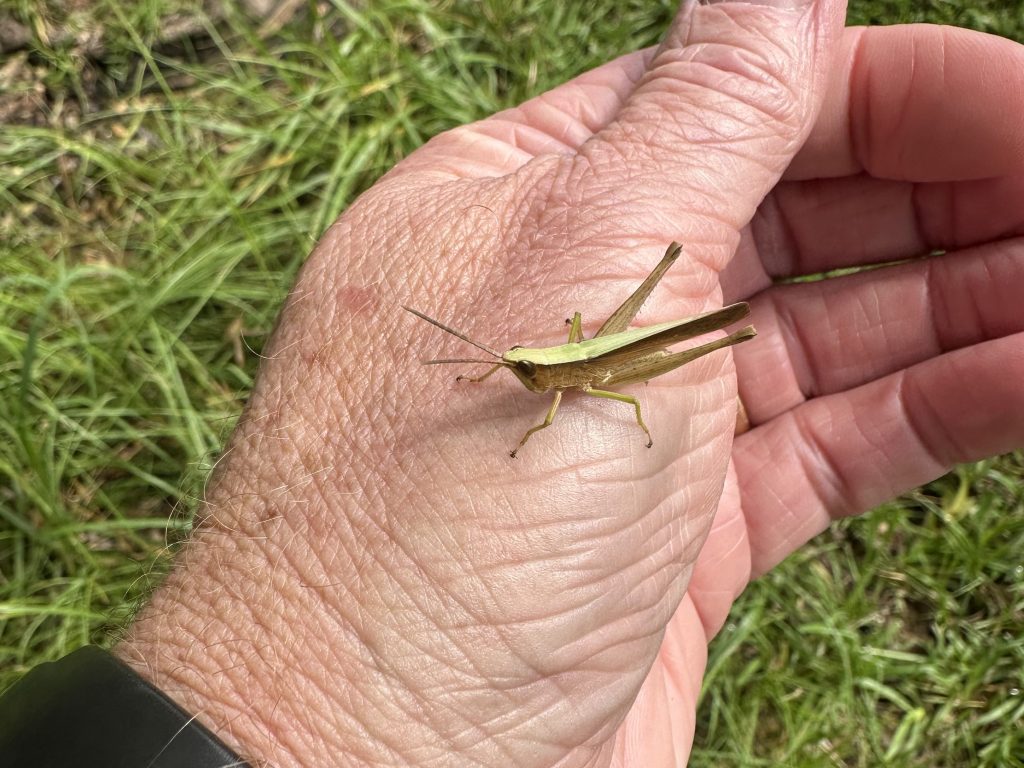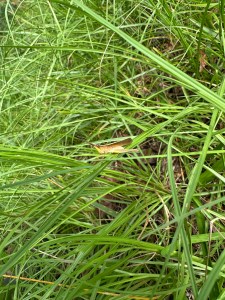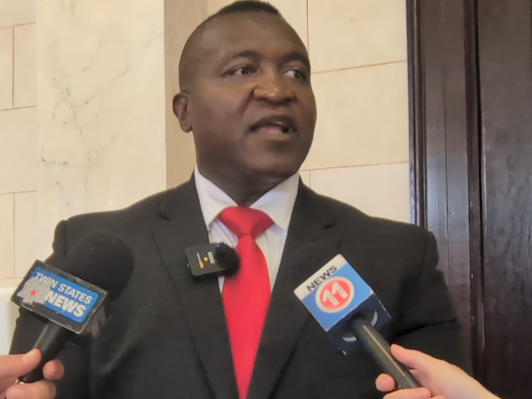Find a problem and start solving it
Published 10:13 am Thursday, July 10, 2025

- As a young man, I remember seeing a lot more grasshoppers in the fields and pastures that I explored. Perhaps we have a problem with biodiversity in the goat pasture here at the farm? Photo by Brad Dye
I recently came across some stellar advice in a quote from author Jeremy B. Jones in “Garden & Gun” magazine. Jones related how Wendell Berry once told him that, “The best way to avoid anxiety that comes from the various hypothetical tomorrows is to find a problem in your community and set about addressing it.”
The simplicity and solutions-oriented nature of the advice is quintessential Berry—make a difference today in your own backyard.
Trending

I’m hopeful that introducing goats to the pasture, along with adding more native trees, grasses, and browse, will encourage more and varied types of hoppers like this to reinhabit what was once a thriving and diverse section of the farm. Photo by Brad Dye
It was much needed guidance from me as each day seems to bring something new to worry about. These anxiety stimuli range from monumental to miniscule and have diverse, seemingly disconnected themes.
However, as I have grown older, I have come to realize that everything, large to small, is connected. As writer Rick Bass said, “Nothing exists long without the support of another thing.”
Saturday as I clipped the grass in the goat pasture, I found myself oscillating between a couple of concerns, one major and the other seemingly minor in comparison.
First, I found myself worrying about the state of the world, and more specifically, a son-in-law’s safety while serving abroad in that world with the U.S. Navy. Second, I found myself perplexed about the overall lack of grasshoppers in the tall grass of the pasture.
Yes, my mind is a strange one. It often moves in varied directions, and as I said, I’ve found it easier lately to concern myself with various issues across the “worry spectrum.”
The “big” worries often feel overwhelming as there is little that I can do to impact them. I can’t control the state of the world. I can’t influence Russia or the Ukraine, Israel or Iran. I can’t change China. For that matter, aside from voting or running for office myself, I can’t do much to change my own country.
Perhaps it’s the “doing” and the ability to affect change that explains why Berry’s advice strikes me as so powerful, it shifts my focus to a problem that I can impact.
It also gives me the opportunity to start having an impact today in my community, my neighborhood, or, in the case of the grasshoppers, my front yard.
Driven by the notion that it’s easier to impact a grasshopper than world peace, I set out Saturday to take Berry’s advice and do just that. I was also inspired by an article that I had recently read on ‘hoppers that gave me a bit of insight into our problem in the pasture.
JoVonn Hill, an assistant professor at Mississippi State’s Agricultural and Forestry Experiment Station, was recently credited with the discovery of 16 new grasshopper species in the deserts of the United States and Mexico. Hill credits the biodiversity of these areas as one of the critical components for the diversity of species.
Biodiversity is, simply put, the “biological diversity in an environment as indicated by numbers of different species of plants and animals.” In short, more diversity begets more diversity. Sadly, we lose more and more habitat and diversity with each passing day.
According to Hill, “It is important to keep exploring our biodiversity, especially from a conservation standpoint, before we lose it.”
Take our pasture for instance. Not too many years ago, it was a diverse wooded area filled with hardwoods, pines, and native plants. At some point, the decision was made to cut and sell the timber and turn the small grove into more yard.
Such decisions are commonplace. We love our lawns in America. As a result, we have cut, mowed, sprayed, compacted, and fertilized our beloved yards into infertile, insect and worm-free patches of soil that offer little if anything in the way of biodiversity. We have traded a diversity of plants, insects, and animals for a sterile monoculture.
Sadly, we have also done the same to much of our farmlands, pasturelands, forests and waterways. The result has been a dramatic decline in various species ranging from fish and wildlife to fowl and insects. Ask yourself this question: What critters did I see more of as a youngster?
For me, one of those answers is grasshoppers. In fairness, there are grasshoppers in the pasture, but they are much smaller and much less diverse than the broad array of hoppers that I encountered in the yards, woods and fields of my childhood.
The great news is that by heeding Berry’s advice, I can start changing that. We’ve already taken step one towards biodiversity by introducing goats into pasture. It’s a recent move as the boys, a trio of Nigerian dwarves once small enough to slide through our fencing, have matured enough to make the move.
Now, rather than compacting the soil with a tractor while mowing, I can sit back and watch as Grover, Pip, and Jack clip, aerate, and fertilize throughout the course of their daily activities. When we add in more native trees and grasses this fall, we should be able to restore much more biodiversity.
Recently, I had the pleasure of reading “The Salt Stones” by Helen Whybrow. In her beautiful memoir about being a shepherd, raising sheep and a family on a Vermont farm, Whybrow speaks to the connected nature of the world in which we all live.
“As I learn how everything is connected, I see more clearly how thin the line is between damage and healing in farming. The way we farm places us on a spectrum from poisoning and depleting the land to being a partner in its restoration and resilience,” Whybrow asserts.
She goes on to add that, “the difference seems to have a lot to do with observation of natural systems and respect for the land, seeing it not just as a hunk of rock and dirt with three elements (N-P-K) and plants and animals growing on it, but as a symphony of interconnected parts that we have collaborated and improvised over millennia. When it comes to land, the whole is, in fact, infinitely greater than the sum of its parts.”
Everything is connected. I want this place to be whole, and wholly diverse. Until next time, here’s to big grasshoppers, goat poop and native plants, and here’s to seeing you out there in our great outdoors.





